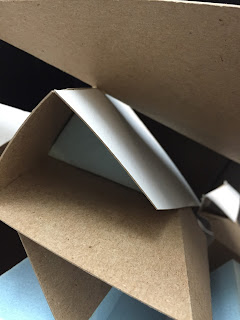Midterm
Approach A
Accumulating repetitive elements suggesting interiority/ creating shifting thresholds
Creasing Stacking Shifting
Within one component, planes being folded, forming an open 'C' and a closed 'C', creating an open void and a partially enclosed void. Matching the side of components and shifting the side back and forth each time.
The extending surfaces of the enclosed spaces become transition between outside and inside. Gradient of shadows are produced as the same time.
Axially Rotating, clamping
Rotating clamps creating intertwined void spaces. Different orientations of entering the folly bring different spacial experiences. Within defined interior, space suddenly expands from a very compressed entrance.-----opening space existing in interior----blurring the boundary.
Approach B
Colliding global division with local division
Funneling, labyrinthing
Large vertical planes globally dividing, small horizontal planes locally dividing.
Light study of the model refined the previous idea of shadow. By orienting the light source in different directions, shadows can be treated as projections of the model, dividing regions in a more uniting way. Because the model itself is scattered and fragmented, shadows can help with dividing the whole thing into 1 or 2 or 3 regions.


















